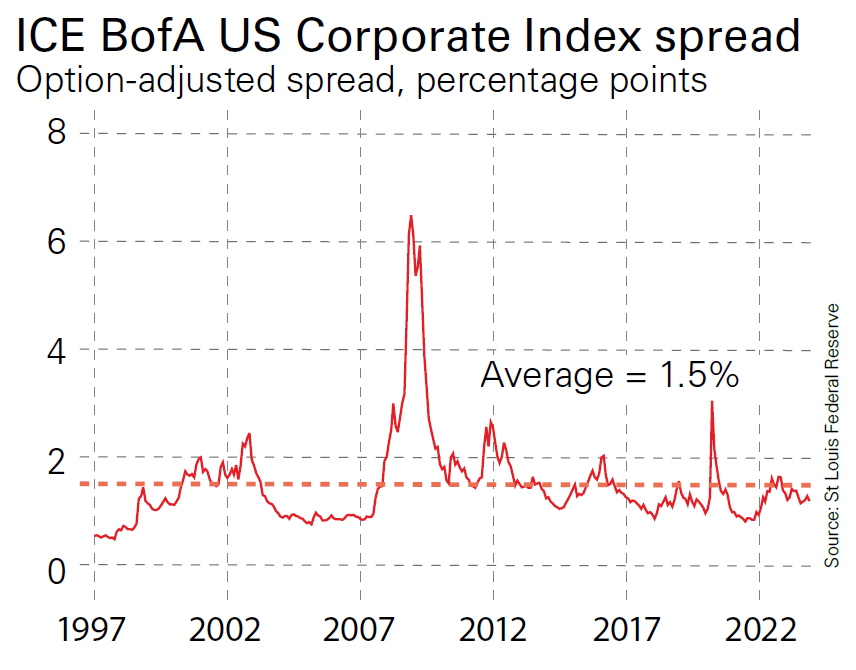In recent updates, I’ve looked at the role of government bonds in the MoneyWeek exchange-traded fund (ETF) portfolio. Next, I’ll move on to review our equity positions. But first, let’s talk briefly about corporate bonds.
These aren’t a core part of the strategy, because they don’t generally add much. Conventional government bonds offer a safe haven. Inflation-linked bonds promise a guaranteed real return. Both reduce risks. Corporate bonds add credit risk: they pay higher yields than government bonds, but you lose part of that if some default.
Over the past 50 years, US corporate bonds have beaten ten-year Treasuries by around 1.2 percentage points per year. Equities have done a lot better. So we’d rather take our risks in equities.
Sign up to Money Morning
Don’t miss the latest investment and personal finances news, market analysis, plus money-saving tips with our free twice-daily newsletter
Don’t miss the latest investment and personal finances news, market analysis, plus money-saving tips with our free twice-daily newsletter
Of course, if corporate bonds were unusually cheap relative to other assets, they would become more attractive. Over most of the past decade, with yields heading ever lower, that was never the case. Yields today are higher – but so are yields on government bonds. The spread between the two has not expanded to an extent that makes corporate bonds look exceptionally compelling.
Credit spreads vary depending on the borrowers’ credit rating. For example, the spread for ICE BofA AAA US Corporate index (ie, top-rated borrowers) currently stands at 0.44 percentage points (pp). The spread for BBB borrowers, the lowest investment-grade rating, is 1.55 pp. Some groups are a bit higher relative to history than others, but none look generous.
The chart below shows a near three-decade history for a composite index of US corporate bonds of all ratings. This is probably a fair overall summary and shows the current spread is a little below the average over this period. Note also that after many years of low rates, many companies are carrying plenty of debt. Some will struggle as they need to refinance this on higher yields. Defaults are likely to rise – they are already ticking up.
All told it’s hard to feel that today’s spreads offer extra compensation for the risks. So there is little obvious opportunity here for the portfolio at present.

(Image credit: St Louis Federal Reserve)
Fallen angels and higher yields
Perhaps the most interesting area for us is fallen angels – bonds that have been downgraded from investment grade to junk. Since some investors are forced sellers in this situation, these often trade cheaper than their fundamentals would justify.
Over the long term, fallen angels have outperformed corporate bonds as a whole. Anomalies like this can be a useful way to add value. With fallen-angel indices now yielding around 8%, they look a little tempting. There are a handful of ETFs in this area such as iShares Fallen Angels High Yield Corp Bond ETF (LSE: RISE). However, spreads on fallen angels are still tight compared to history, while this particular ETF has lagged its index by more than I’d expect over the past five years. I will be looking at this sector closely as the credit cycle turns – but I’m not yet convinced this is the time or way to invest.
This article was first published in MoneyWeek’s magazine. Enjoy exclusive early access to news, opinion and analysis from our team of financial experts with a MoneyWeek subscription.
Related articles
Explore More

